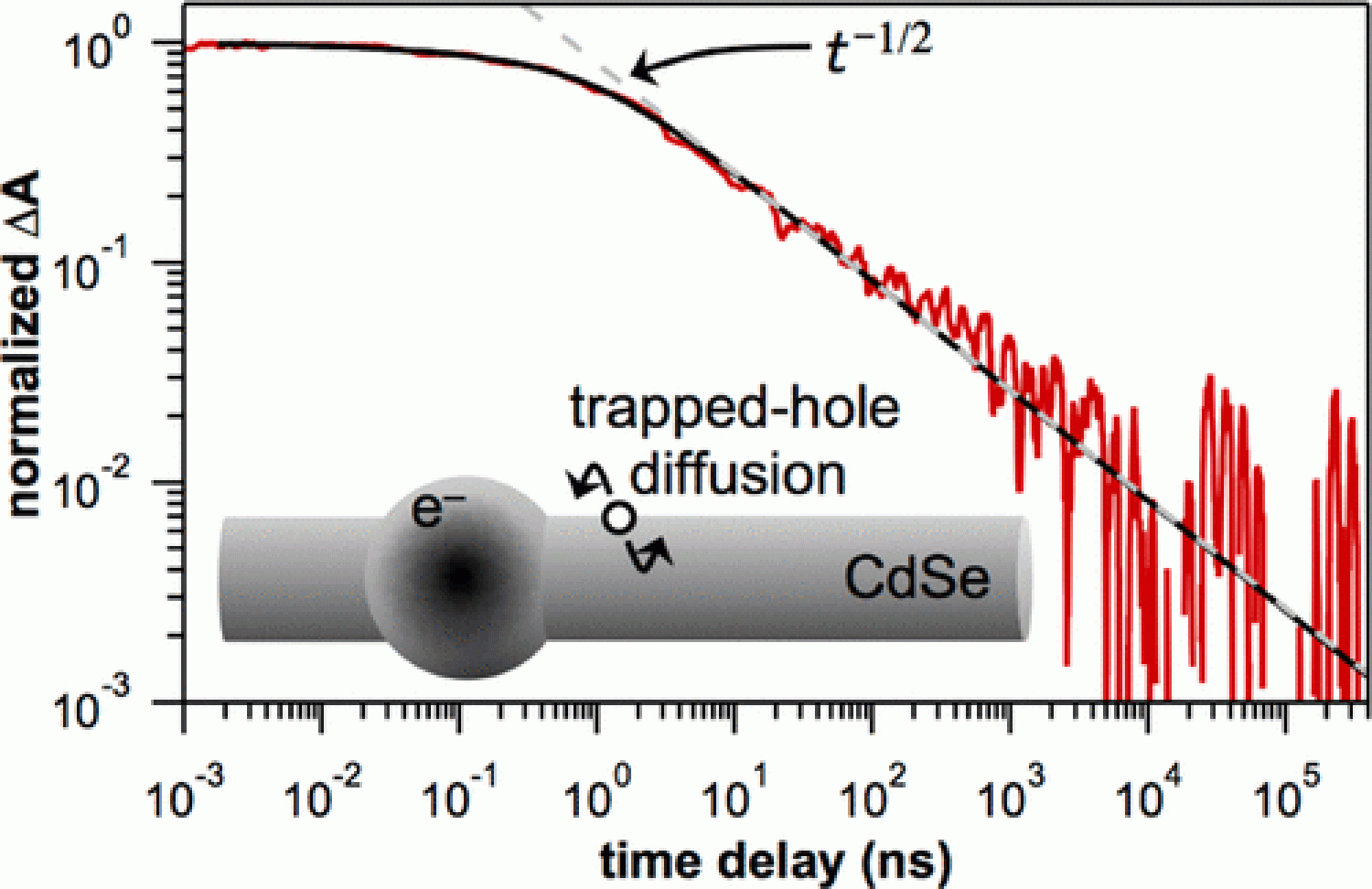Trapped-Hole Diffusion in Photoexcited CdSe Nanorods

Surface charge-carrier traps are ubiquitous in colloidal semiconductor nanocrystals and fundamentally impact excited-state relaxation, making it critical to understand both their nature and their dynamics. Here, using photoluminescence upconversion and transient absorption spectroscopy, we study hole trapping and the dissociation between electrons and trapped holes in nonuniform CdSe nanorods and monitor their subsequent recombination dynamics. These recombination dynamics are described well with a diffusion–annihilation model wherein the trapped hole undergoes a random walk on the nanocrystal surface until it encounters the electron. This model fits the nonexponential excited-state decay over more than 7 orders of magnitude in time with a single adjustable parameter. The characterization of the spatial dynamics of trapped holes in CdSe nanostructures extends our fundamental understanding of excited-state dynamics in this important class of materials. The surface motion of trapped holes may have important implications for optoelectronic applications that rely on charge transport and charge transfer.
James K. Utterback, Hayden Hamby, Orion M. Pearce, Joel D. Eaves, and Gordana Dukovic Trapped-Hole Diffusion in Photoexcited CdSe Nanorods J. Phys. Chem. C2018, 122, 29, 16974–16982

